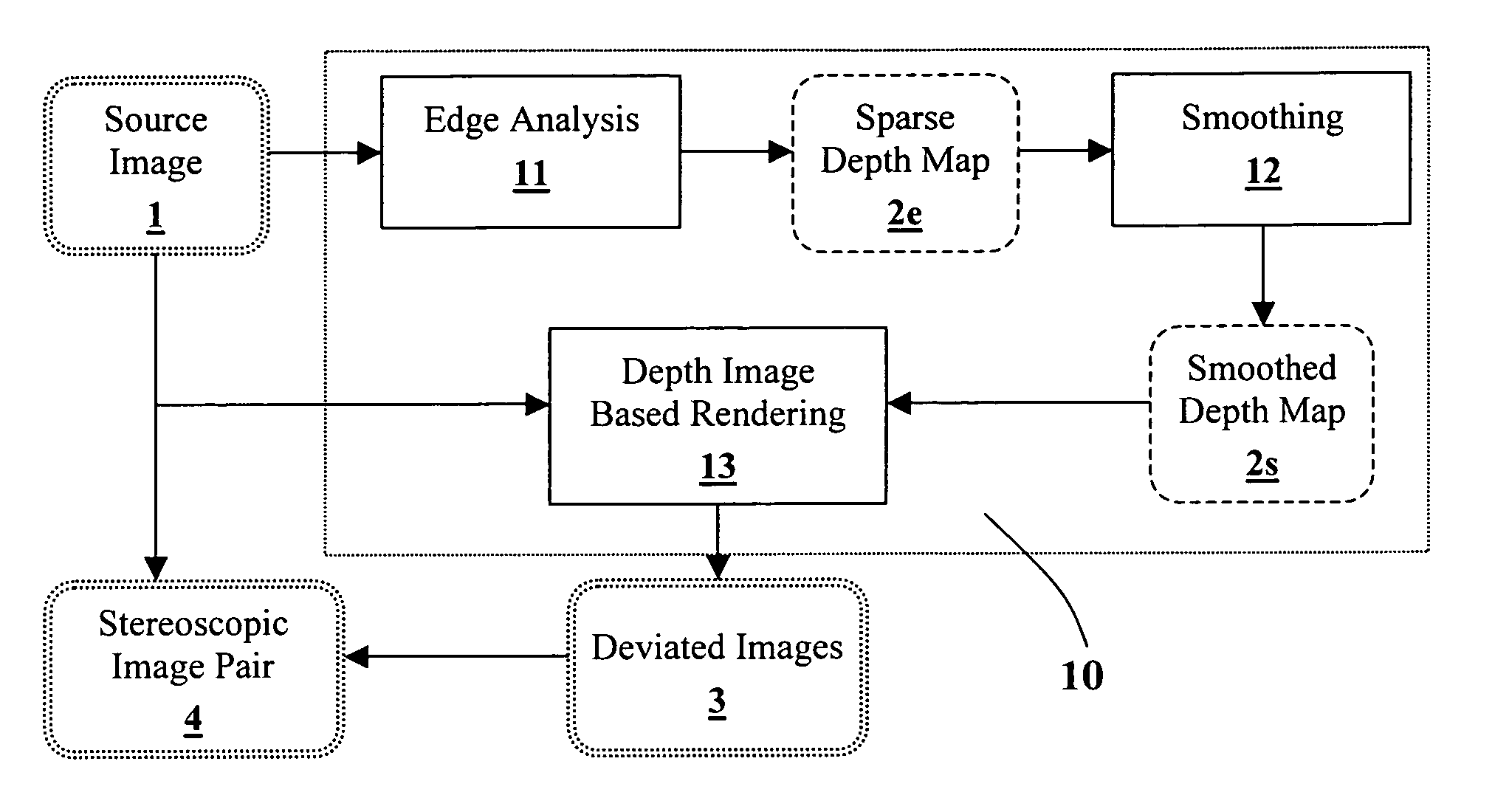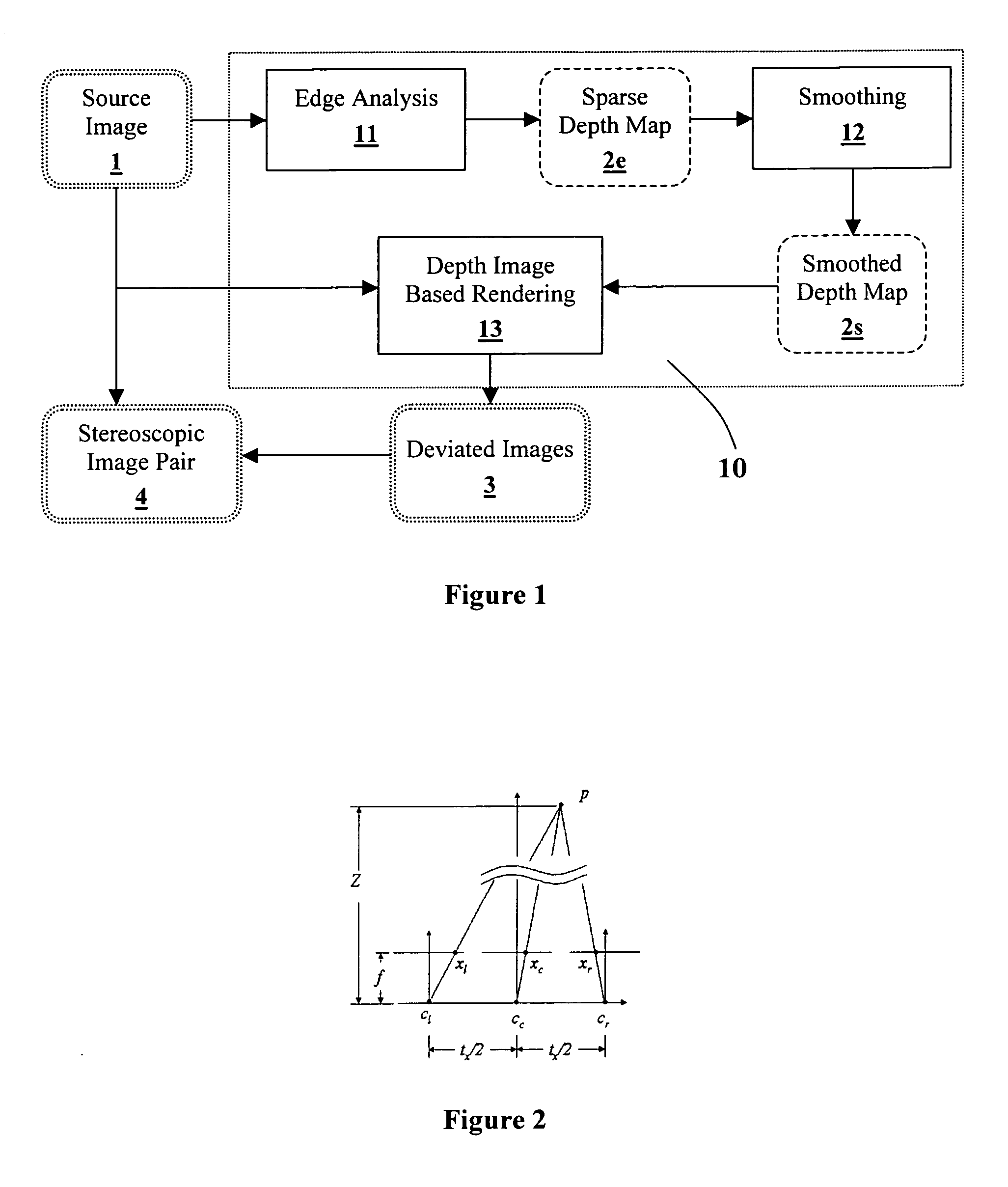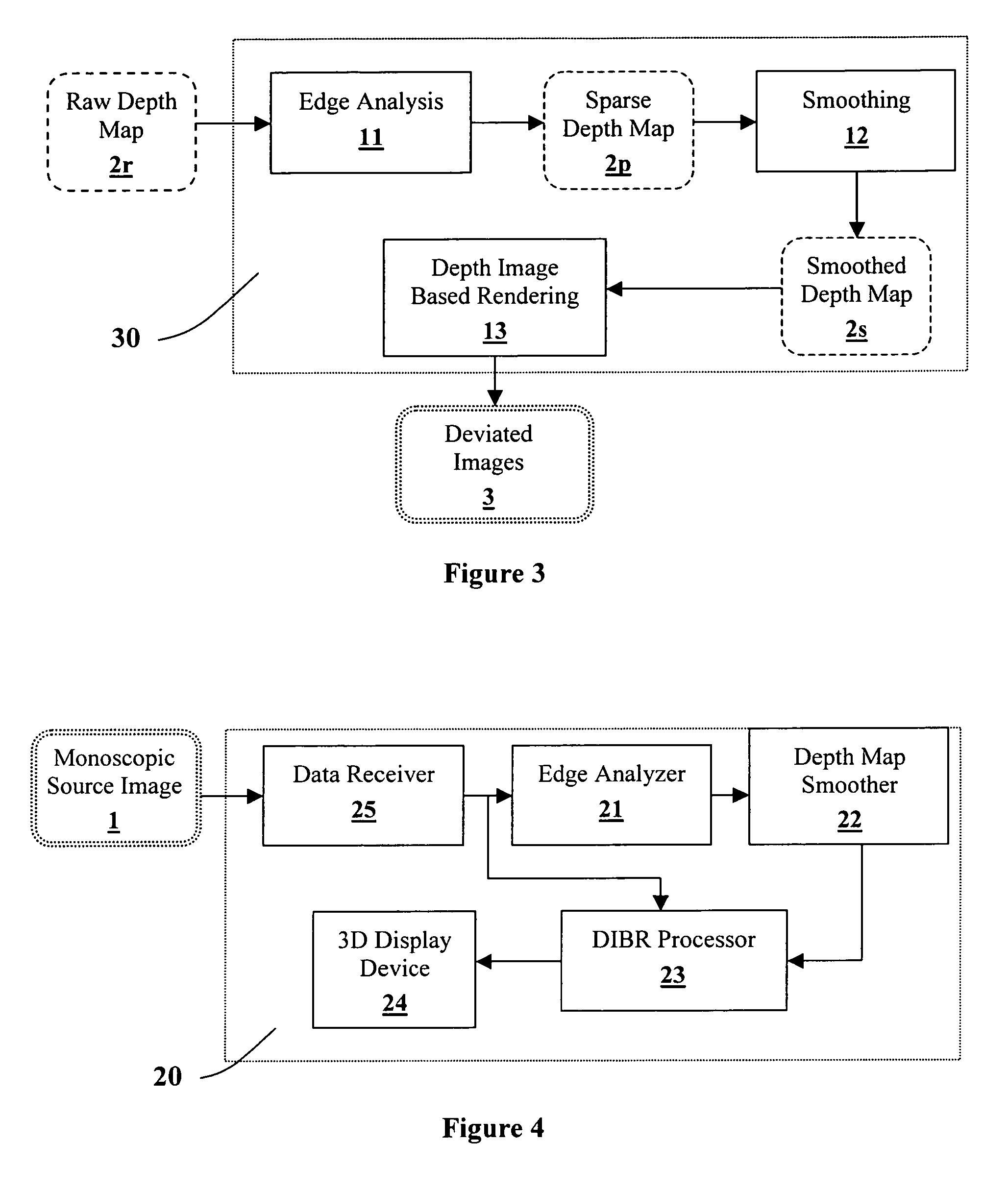Generating a depth map from a two-dimensional source image for stereoscopic and multiview imaging
a two-dimensional source image and depth map technology, applied in the field of depth maps generated from monoscopic source images, can solve the problems of insufficient depth maps, difficulty in generating depth maps with adequate accuracy, and insufficient computational cost, and achieve the effect of saving bandwidth requirements
- Summary
- Abstract
- Description
- Claims
- Application Information
AI Technical Summary
Benefits of technology
Problems solved by technology
Method used
Image
Examples
Embodiment Construction
[0074] Reference herein to any embodiment means that a particular feature, structure, or characteristic described in connection with the embodiment can be included in at least one embodiment of the invention. The appearances of the phrase “in one embodiment” in various places in the specification are not necessarily all referring to the same embodiment, nor are separate or alternative embodiments mutually exclusive of other embodiments.
[0075] In context of the present invention, the following general definitions apply. A source image is a picture, typically digital and two-dimensional planar, containing an image of a scene complete with visual characteristics and information that are observed with one eye, such as luminance intensity, shape, colour, texture, etc. A depth map is a two-dimensional array of pixels (or blocks of pixels) each being assigned a depth value indicating the relative or absolute depth of the part of objects in the scene, depicted by the pixel (or block) from ...
PUM
 Login to View More
Login to View More Abstract
Description
Claims
Application Information
 Login to View More
Login to View More - R&D
- Intellectual Property
- Life Sciences
- Materials
- Tech Scout
- Unparalleled Data Quality
- Higher Quality Content
- 60% Fewer Hallucinations
Browse by: Latest US Patents, China's latest patents, Technical Efficacy Thesaurus, Application Domain, Technology Topic, Popular Technical Reports.
© 2025 PatSnap. All rights reserved.Legal|Privacy policy|Modern Slavery Act Transparency Statement|Sitemap|About US| Contact US: help@patsnap.com



